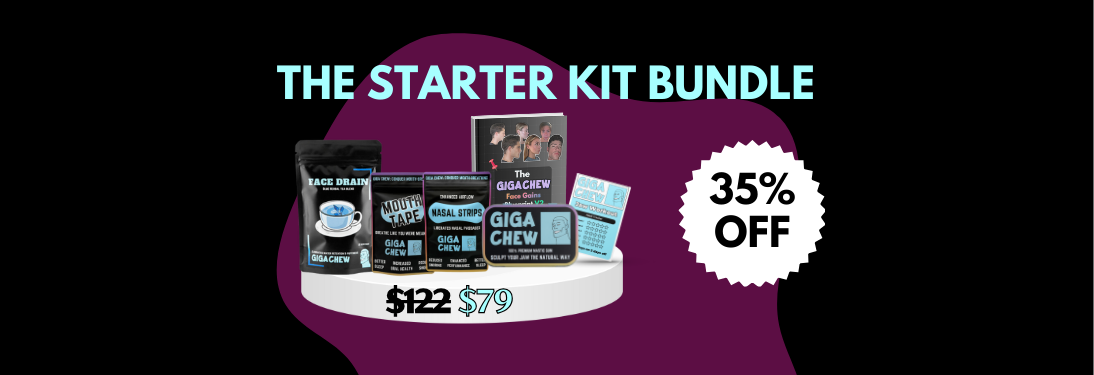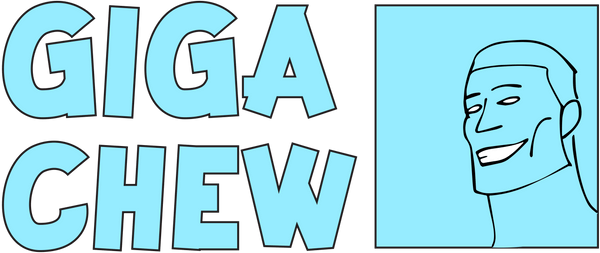Looking to boost your facial game? Mewing might be the answer you've been searching for. This tongue technique, named after British orthodontist Dr. John Mew, has taken the internet by storm.
Mewing involves pressing your tongue against the roof of your mouth to potentially reshape your jawline and improve facial structure.
We've all dreamed of having that chiselled jawline we see on movie stars and models. While genetics play a big role, mewing offers a natural way to work towards that goal.
It's not just about looks either - proper tongue posture may help with breathing, sleep, and even speech.
Let's dive deeper into how mewing works, the right way to do it, and what results you might expect.
We'll cover everything from basic technique to common mistakes to avoid. Ready to unleash your inner supermodel? Let's get started!
Key Takeaways
- Mewing involves pressing the tongue against the roof of the mouth
- Consistent practice over time is key for potential jawline changes
- Proper technique and patience are essential for best results
- Chewing mastic gum can work in conjunction with mewing

Understanding Mewing: More Than Just a Trend
Mewing is a buzzworthy technique that's taking the internet by storm. It's not just about looking good - it's a whole approach to facial posture that can have surprising effects.
History and Principles of Mewing
Mewing gets its name from Dr. Mike Mew, an orthodontist who popularised this technique. It's all about proper tongue posture and how it shapes our faces. The main idea? Keep your tongue on the roof of your mouth.
Here's what mewing involves:
• Close your mouth
• Place your whole tongue against the roof of your mouth
• Breathe through your nose
• Keep your lips sealed
Mewing is part of a bigger field called orthotropics. This looks at how facial growth is affected by muscle use and posture. The theory is that modern diets and breathing habits have changed our facial structure. Mewing aims to fix that.
Facial Posture and Its Impact on Appearance
Our faces are always changing, even as adults. Mewing believers reckon it can help:
• Define the jawline
• Reduce a double chin
• Improve facial symmetry
• Make cheekbones more prominent
It's not just about looks, though. Proper oral posture might help with:
• Breathing
• Sleep quality
• Teeth alignment
Some folks swear by chewing tough foods or gum to boost mewing effects. There's even special mastic gum that's meant to give your jaw a workout.
Changes from mewing can take months or years to show up. It's not a quick fix, but a long-term habit. And while many rave about it, more research is needed to back up all the claims.

How to Mew Correctly: Foundation for Success
Mewing is all about nailing the right tongue position and body posture. Let's dive into the nitty-gritty of how to do it properly.
Finding the Right Tongue Position
To get your tongue in the perfect spot:
- Close your mouth and relax your jaw.
- Place the tip of your tongue just behind your front teeth.
- Press the rest of your tongue flat against the roof of your mouth.
- Make sure your whole tongue is touching the palate, including the back.
This might feel a bit odd at first, but don't worry! It'll become second nature with practice.
The key is to keep your tongue up there all day, even when you're not thinking about it.
Remember, your tongue should fit snugly against your palate. If it feels squished, you might need to widen your palate first. Chat with an orthodontist if you're unsure.
Achieving Proper Body and Head Posture
Good posture is crucial for effective mewing. Here's what to focus on:
- Keep your head up and chin tucked slightly.
- Pull your shoulders back and down.
- Stand tall with your chest out.
- Engage your core muscles.
When you're sitting, make sure your back is straight and your feet are flat on the ground. Don't slouch!
Proper posture helps align your upper jaw and maxilla, making mewing more effective. It might feel a bit forced at first, but stick with it. Your body will thank you later!
Mewing in Action: Jawline Transformation

Ready to level up your mewing game? Let's dive into some practical exercises, progress tracking tips, and the science behind this jaw-dropping technique.
Mewing Exercises to Define Your Jaw
Keen to sculpt that chiselled jawline? We've got you covered with these mewing exercises:
- The Tongue Press: Push your tongue flat against the roof of your mouth. Hold for 10 seconds, then relax. Repeat 10 times.
- The Chin Tuck: Tuck your chin down and back, creating a double chin. Hold for 5 seconds, then release. Do this 15 times.
- The Smile Stretch: Smile as wide as you can, then purse your lips. Hold each position for 5 seconds. Repeat 10 times.
- The Jaw Clench: Bite down gently, hold for 5 seconds, then relax. Do this 20 times.
Remember, consistency is key! Try to do these exercises daily for the best results.
Maintaining and Measuring Progress
Tracking your mewing journey is crucial for staying motivated. Here are some top tips:
- Take weekly photos from the same angle and lighting to spot subtle changes.
- Measure your face with a tape measure, focusing on jawline length and width.
- Keep a mewing diary to note any changes in facial structure or breathing.
Be patient - noticeable changes can take months or even years.
Also - remember to breathe through your nose while exercising. It helps keep your jaw in the right spot and gives your face muscles a proper workout.
Exploring the Science Behind Mewing
While mewing has gained popularity, it's important to note that scientific evidence is still limited. Here's what we know:
- Mewing is based on the concept of orthotropics, which focuses on facial growth and development.
- It may help improve tongue posture and strengthen jaw muscles over time.
- Some people report benefits like reduced mouth breathing and improved sleep quality.
However, more research is needed to fully understand mewing's long-term effects. If you have concerns, it's best to chat with an orthodontist or dentist before diving in.
Beyond Mewing: Additional Strategies
Mewing is just the beginning. We've got heaps of other tricks up our sleeve to help you sculpt that jaw.
Let's dive into some extra techniques and lifestyle tweaks that'll take your jawline game to the next level.
Integrating Facial Exercises and Chewing Techniques
Facial exercises are a top-notch way to pump up those jaw muscles - and chewing is another ace way to work those facial muscles.
Grab some sugar-free gum and give it a good chomp for 10-15 minutes a day. It's like a mini-workout for your jaw! Our recommendation is - obviously - Mastic Gum.
Giga Chew Mastic Gum
Giga Chew Mastic Gum is the new kid on the block for jawline enthusiasts.
This special gum is much tougher than your average bubble gum, giving your jaw muscles a real workout.
Mastic gum comes from tree sap and has been used for yonks in Greece. It's got a unique flavour and might take some getting used to, but it's worth it for the jaw-strengthening benefits.
Pop a piece in your gob for about 30 minutes a day. Start slow and build up your chewing time. Your jaw might feel a bit sore at first, but that's just a sign it's working!
We've found that chewing mastic gum is a great way to boost your jawline gains.
Lifestyle Adjustments for Maximal Impact

Shape of your jawline isn't just about exercises - your whole lifestyle plays a part. Here are some tips to boost your efforts:
- Watch your posture: Keep your head up and shoulders back.
- Stay hydrated: Drink plenty of water to keep your skin looking plump.
- Eat crunchy foods: Carrots, apples, and nuts give your jaw a workout.
- Get enough sleep: It helps reduce puffiness in your face.
- Cut back on salt: Too much can make your face look bloated.
Don't forget about overall health. Regular exercise and a balanced diet can help reduce face fat, making improving your facial appearance easier and helping your jawline pop even more.
Dr. John Mew asserts that improper jaw posture can lead to various health issues, including sleep apnea, speech disorders, swallowing problems, and sinus inflammation - and that's why mewing has gained in popularity these past few years.
Future of Mewing: What Lies Ahead?
Mewing and jawline exercises are gaining steam, and we reckon they're here to stay.
More research is being done to back up the benefits, which is ace.
We might see new gadgets pop up to help with mewing and jaw exercises.
Think smart mirrors that track your progress or apps that remind you to keep your tongue in the right spot.
As people get more into natural ways to look good, mewing could become as common as brushing your teeth.
Who knows, we might even see "jaw gyms" popping up in the future!
Potential Challenges and Solutions
Mewing can be tricky at first, but don't worry - we've got your back! Let's look at some common hurdles and how to jump over them like a pro.
Navigating Orthodontic Concerns
Got crooked teeth or braces? No worries! Chat with your orthodontist before diving into mewing.
They might give you the green light with a few tweaks:
- Soft mewing: A gentler approach that's kinder on your teeth
- Proper tongue alignment: Find a comfy spot that works for you
- Gradual progress: Take it slow and steady
Remember, mewing isn't a quick fix for misaligned teeth. It's more about overall facial structure. Keep up with your regular dental check-ups and brace adjustments.
Dealing With Discomfort and Pain
New to mewing? You might feel a bit sore at first. It's like working out a muscle you've never used before.
Here's how to ease the aches:
- Start with short sessions: 5-10 minutes at a time
- Take breaks: Give your tongue and jaw a rest
- Massage your jaw: Gently rub in circular motions
- Stay hydrated: Drink plenty of water
If you're getting headaches or jaw pain that won't quit, ease off and chat with your dentist. They might spot an underlying issue that needs attention.
Addressing Common Mishaps in Mewing
Oops! Made a mewing mistake? No drama - we all do.
Here are some common blunders and how to fix 'em:
- Pressing too hard: Ease up, tiger! A gentle touch is all you need.
- Improper tongue placement: Aim for the roof of your mouth, just behind your upper front teeth.
- Mouth breathing: Keep those lips sealed and breathe through your nose.
- Giving up too soon: Stick with it! Results take time and patience.
Watch out for speech changes or snoring. If these pop up, double-check your technique or chat with a pro.
With practice, you'll be mewing like a champ in no time!
Frequently Asked About Mewing

Mewing has become a popular technique for improving jawline definition. Let's tackle some common questions about this method and explore how it can help shape your face.
What's mewing and how can it shape up my jawline?
Mewing is a technique that focuses on proper tongue posture. It involves pressing your tongue against the roof of your mouth to potentially reshape your jaw over time. This method aims to create a more defined jawline and balanced facial features.
Can you tell me if mewing is really the bees knees for a sharper jawline, and does it actually work?
While mewing isn't a magic solution, many people reckon it's worth a go. Some folks have seen noticeable changes in their facial structure.
Keep in mind that results can vary, and it takes time and consistency to see any effects.
What's the go with tongue posture and how do I do this mewing thing right?
Good tongue posture is key to mewing. Here's how to do it:
- Rest your entire tongue against the roof of your mouth
- Keep your lips closed
- Breathe through your nose
- Make sure your teeth are lightly touching
It might feel a bit odd at first, but with practice, it'll become second nature.
Any hot tips on how to keep mewing while I'm catching some Z's?
Mewing during sleep can be tricky, but here are some tips:
- Practice mewing throughout the day to build muscle memory
- Try taping your mouth shut (carefully!) to encourage nose breathing
- Use a special pillow designed to support proper head and neck posture
Remember, it takes time to develop this habit, so don't stress if you can't do it all night straight away.
How much time each day should I dedicate to mewing to get the best results?
Ideally, you want to make mewing a constant habit.
Aim to maintain proper tongue posture as much as possible throughout the day. Start with shorter periods and gradually increase the duration.
Consistency is more important than the exact amount of time.
Besides mewing, what are some other top-notch exercises to carve out a chiselled jawline?
Chewing exercises can be great for working those jaw muscles. Try these:
- Chew sugar-free gum for 10-15 minutes daily
- Do chin tucks to strengthen neck muscles
- Practice jaw clenches and releases
We also recommend giving mastic gum a go. It's tougher than regular gum and may help boost jawline formation alongside mewing.
Disclaimer: Giga Chew is a chewing gum made from mastic gum, a natural tree resin produced in Greece. While Giga Chew may provide benefits such as aiding digestion and potentially alleviating acid reflux, or exercising the masseter muscle, leading to a more defined jawline, individual results may vary. Giga Chew is not intended to diagnose, treat, cure, or prevent any disease. The information provided on this website or in promotional materials is for informational purposes only and should not be construed as medical advice. Please consult with a healthcare professional before using Giga Chew, mewing or making any changes to your diet or lifestyle.







